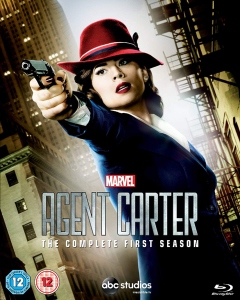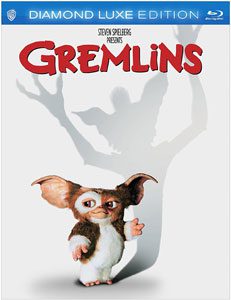“Marvel’s Agent Carter” (8 p.m. Central Tuesdays on ABC) largely meets my expectations of having the vibe of those two “X-Files” episodes that featured FBI agent Arthur Dales in the 1940s. All the guys wear suits, and if they’re not smoking a cigar, you get a sense that they could do so at any moment. The women are in demure skirts and blouses, the technology is primitive (photographs have to be “developed”) and – although the show is filmed in color – everything is tan and brown (except the photos, which are in black and white).
The plight of women back in the day
“Agent Carter’s” portrayal of women in positions of power during that time feels accurate, too. I’m not sure how many women climbed to significant ranks in U.S. government agencies in the 1940s, but if they did, it seems right that men would generally not know how to react to the situation.
At various points in the two-hour premiere, Peggy Carter (the pitch-perfect – with perfectly ironed clothes and perfect hair — Hayley Atwell) is alternately accused (by the requisite a–h—- at the office) of being able to attract a lot of men and cheered up (by her roommate) by the idea that she should be able to attract a lot of men. Carter’s bosses know her Sydney Bristow-style undercover skills are essential on some missions, but Carter can also easily earn a day off by mumbling something about having to take care of “women’s things.”

“Marvel’s Agent Carter” (2015)
Tuesdays, ABC
Creators: Christopher Markus, Stephen McFeely
Stars: Hayley Atwell, James D’Arcy, Enver Gjokaj
Carter is utterly cool and competent in dangerous situations – except for the one time when she’s unable to stop her roommate from getting killed. But she can be a bit quirky at the office, like when she hides under a desk while trying to pick a drawer lock and bumps her head when the phone rings.
Agent Sousa (Enver Gjokaj, the male doll on “Dollhouse”) gives her looks like Oz when he’s crushing on Willow from a distance; I expect him to mutter “Who IS that girl?” Sousa is similarly an outsider because he got his leg blown off in WWII and uses a cane; this oddity helps him sympathize with Carter’s oddity of being a woman. But generally, when these proto-S.H.I.E.L.D. agents investigate alien technology, it’s less confusing to them than working with a woman.
So “Agent Carter” is a fair, if exaggerated, portrayal of 1940s female agents. But it also was kinda boring in its first two hours. Like “Guardians of the Galaxy” and several episodes of “Agents of S.H.I.E.L.D.” and probably several of the Marvel movies I haven’t seen, the good guys and bad guys are chasing after a potentially destructive orb.
Plot driven by maguffin
While a single orb developed and misplaced by Iron Man’s dad – which Carter defuses like a bomb – is the maguffin of the first episode, a truckful of the things becomes the focus of episode two. An orb here and there is fine if it specifically symbolizes something relating to the real world, or if it has an outstanding character-driven storyline built around it (like the Orb of Thesulah in Season 2 of “Buffy”), but the Marvel TV and movie universe is peppered with orbs to an absurd degree.
Other portrayals of tech are a bit more interesting. As in “Agents of S.H.I.E.L.D.,” the agency’s tech (and that of its enemies’) exists on an alternate line of progress from what the public at large sees. Most notably – in a parallel to “Fringe,” although no mirror is needed here – we see one of the villains plug his typewriter into a modem from the future, where he gets instructions from his bosses. (The instruction is usually to kill anyone who gets in his way.)
In another way, the 1940s setting hurts “Agent Carter.” Since the world is still here in the modern Marvel universe of “Agents of S.H.I.E.L.D.” and all those movies, we already know Carter saved the day on the missions that will be chronicled in this eight-episode series.
As such, the only reason to flash back and tell her story – which is utterly unrelated to anything happening on the current “Agents of S.H.I.E.L.D.” storyline (so far; I suppose the time travel nature of the typewriter communication could allow for a crossover episode down the road) – is if the character and situations are compelling enough to warrant it.
For fans of the “Captain America” films, where Carter was the title character’s girlfriend and ally, “Agent Carter” might indeed be a compelling sidebar. I haven’t seen those movies, so I need to be hooked solely by what I see here on the small screen. Despite beautiful production design, a well-cast lead actress, a few quippy lines and an overall sense of professionalism, the finished product is shallow, and I can’t see much reason for “Agent Carter” to exist.


